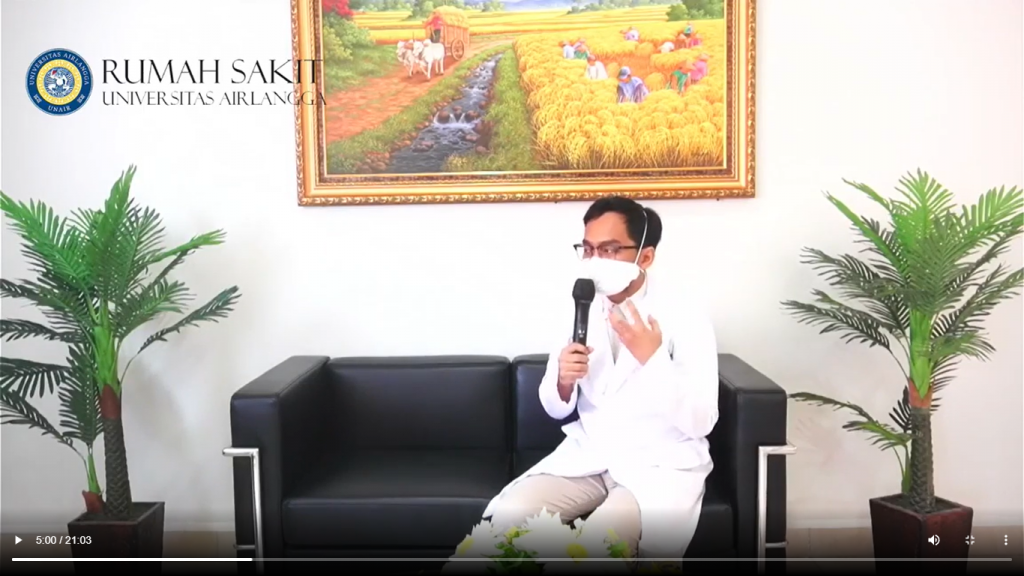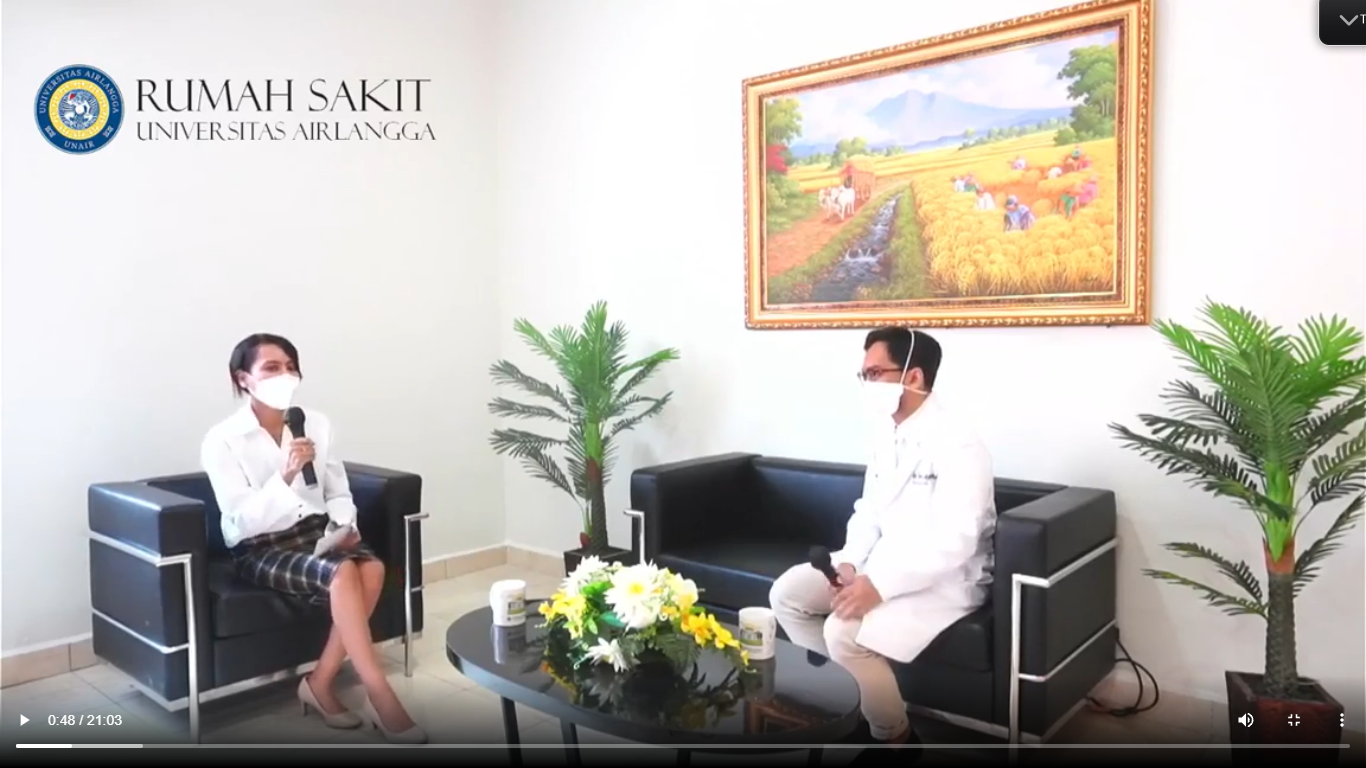UNAIR NEWS – The Covid-19 pandemic has made people lazy to move their bodies. Lack of physical activities and unhealthy eating habits become significant risk factors of osteoporosis. Therefore, people still need to do physical exercise at home, especially focusing on strengthening and stretching bones and balance.
The importance of physical exercise to prevent osteoporosis was conveyed by dr. Udria Satya Pratama, Sp.OT at the Podcast in Hospital (PIH) held by the Universitas Airlangga Hospital (RSUA) through the Instagram TV platform on October 20, 2021. The event, which was held to celebrate World Osteoporosis Day, raised the theme “All About Osteoporosis and Myths and Facts Regarding Exercise.”
The doctor, who is well-known as Udria, said that laziness is a risk factor for osteoporosis because bones need to be trained so they will not not get thinner.
“Bones are almost like muscles. If you don’t train them, they will thin out. Just like our muscles, if they are not made to move for a long time, they become loose,” he said.
Furthermore, he categorized three physical activities that can be done during the pandemic, and these three activities have to be carried out in a balanced manner.
Strength exercise
Strength exercise is very important to maintain bone health and muscle strength and help improve body balance. Examples of these exercises are push-ups, barbell lifting, and other similar physical activities.
“Strength exercise is an exercise to strengthen bones and muscles as well as maintain fitness,” he said.
Weight-bearing exercise
Udria explained that this exercise makes a person move against gravity in an upright position, so it is very suitable for strengthening bones. The exercise includes aerobics, climbing stairs, dancing, jogging, running, walking, and yoga.
“This exercise makes our feet touch the ground, so we can build bones and keep them strong,” he said.
Non weight-bearing exercise
This physical exercise is the opposite of weight-bearing exercise. Our feet do not touch the ground, or the legs are not given weight (in hung position). The exercise covers cycling, swimming, and cardiovascular endurance.
“This exercise is lighter than weight-bearing exercise because it does not support the body so much,” he said.

Furthermore, Udria argued that weight-bearing exercise is the most important physical exercise to prevent osteoporosis because it maximizes bone strength. Then, continued Udria, physical exercise can be done within 150 minutes per week or 4-5 times a week with a duration of 30 minutes. If we have just started to do exercise routinely, it is advisable to do the exercise with a low start or light exercise first.
“If you are a beginner, don’t be in a hurry to run long distances and for a long time, but it must be gradual,” he said.
At the end of the podcast, Udria also advised us to pay attention to the intake of nutrients. For instance, calcium and vitamin D are very important to maintain bone health. A person needs 1000-1500 mg of calcium per day, but a glass of milk only contains 280 mg of calcium. Therefore, it is important to supplement it with other food sources or supplements.
“A glass of milk contains only 280 mg of calcium, but that does not mean that you should drink four glasses of milk a day because milk also contains fat etc. Thus, to meet our calcium needs, we can consume other calcium sources or supplements,” he concluded.
Author: Adelya Salsabila Putri
Editor: Khefti Al Mawalia





